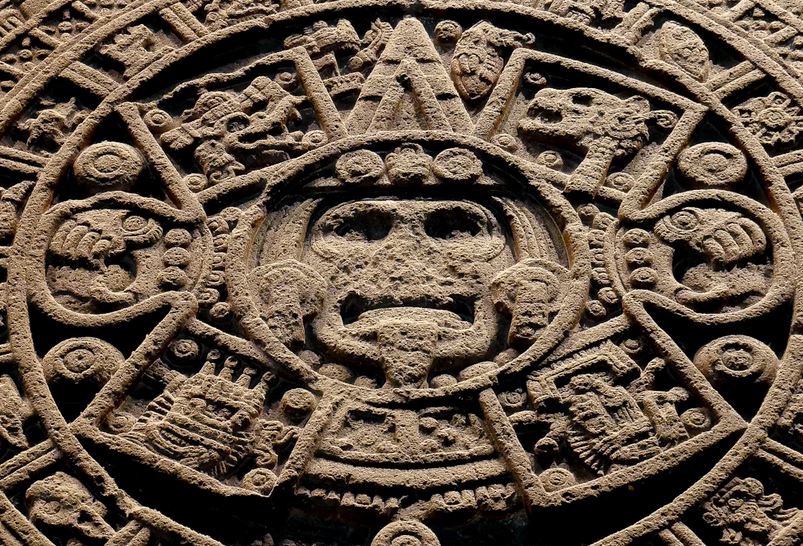Facts About the Aztec Civilization: A Look Into Their World |

|
|
Photo by: Roberto Carlos Román Don |
|
More Ancient Facts: The Aztec civilization, which flourished in central Mexico from the 14th to 16th centuries, left behind a remarkable legacy. Known for their sophisticated social structure, impressive architecture, and complex religious beliefs, the Aztecs continue to fascinate historians and the public alike. Here are 12 fascinating facts that offer a glimpse into their world. Their Capital City Was an IslandThe Aztec capital, Tenochtitlan, was strategically built on an island in Lake Texcoco. By the time the Spanish arrived, it was one of the largest and most impressive cities in the world, with intricate canals, temples, and causeways connecting it to the mainland. They Built Artificial Islands for AgricultureTo expand their agricultural land, the Aztecs developed an ingenious system of artificial islands called chinampas. These "floating gardens" were incredibly fertile and allowed them to grow a significant amount of food to support their large population. Human Sacrifice Played a Significant Role in Their ReligionHuman sacrifice was a prominent aspect of Aztec religious practice. They believed it was necessary to appease their gods, especially Huitzilopochtli, the god of the sun and war, and ensure the continuation of the cosmos. The scale and frequency of these sacrifices are still debated, but it was undoubtedly a central ritual, as detailed by the Khan Academy. They Had a Complex Calendar SystemThe Aztecs had a sophisticated understanding of timekeeping and developed two interconnected calendar systems: a 365-day solar calendar (xiuhpohualli) and a 260-day ritual calendar (tonalpohualli). The combination of these two calendars created a 52-year cycle that was highly significant in their cosmology, as explained by the Mexicolore website. Chocolate Was Highly ValuedCacao beans were highly prized by the Aztecs and were used as a form of currency and to create a bitter, frothy drink enjoyed by the elite. This early form of chocolate was quite different from the sweet treats we know today. They Had a Formal System of EducationThe Aztecs had a well-structured system of education. There were two main types of schools: the *telpochcalli* for military training and general education, and the *calmecac* for the sons of nobles, focusing on higher learning, priesthood, and governance, as described by the ThoughtCo. article on Aztec education. Poetry and Oratory Were Highly RespectedArtistic expression, particularly poetry and oratory, held a significant place in Aztec society. Skilled poets and speakers were highly esteemed, and their works often dealt with themes of history, mythology, and the human condition. They Practiced a Form of Ballgame with Ritual SignificanceThe Aztecs played a ritual ballgame called *ullamaliztli* (or *tlachtli*). The game had religious and political significance, and the outcome could sometimes have serious consequences for the players, as detailed by the Ancient History Encyclopedia. Their Society Was Highly StratifiedAztec society was rigidly structured with a clear hierarchy. At the top was the *tlatoani* (supreme ruler), followed by nobles, priests, warriors, merchants, and farmers. Social mobility was possible but limited. They Had a Well-Organized MilitaryThe Aztec military was a powerful force that played a crucial role in their expansion and control of Mesoamerica. Warriors were highly respected, and military achievements were a path to social advancement. They Developed Advanced Medical PracticesThe Aztecs had a considerable understanding of medicine and used a variety of herbs and surgical techniques. Evidence suggests they could treat fractures, perform minor surgeries, and had knowledge of medicinal plants, as discussed in academic sources on Aztec medicine. Their Empire Was Relatively Short-LivedDespite their impressive achievements, the Aztec Empire was relatively short-lived, lasting for roughly two centuries before its conquest by the Spanish in the early 16th century. The arrival of Europeans brought diseases and conflict that ultimately led to the empire's downfall. The Aztec civilization was a complex and fascinating society with remarkable achievements in various fields. These 12 facts offer a glimpse into their rich history and cultural heritage, reminding us of their significant place in the history of Mesoamerica. Aztec Civilization FAQsCheck out some more questions about the Aztecs! Where was the Aztec civilization located?The Aztec civilization was primarily located in the Valley of Mexico, in what is now central Mexico. Their capital city, Tenochtitlan, was situated on an island in Lake Texcoco. What was the role of human sacrifice in Aztec culture?Human sacrifice was a significant aspect of Aztec religion. They believed it was necessary to appease their deities, particularly the sun god Huitzilopochtli, and maintain cosmic balance. The Khan Academy offers more details on this practice. What were chinampas?Chinampas were artificial islands created by the Aztecs in shallow lake beds. These fertile "floating gardens" were used for agriculture and were crucial for feeding the large population of Tenochtitlan. What led to the downfall of the Aztec Empire?The downfall of the Aztec Empire was primarily due to the arrival of the Spanish conquistadors led by Hernán Cortés in the early 16th century. Factors contributing to their defeat included superior Spanish weaponry, alliances with rival indigenous groups, and the devastating impact of European diseases like smallpox, as detailed in historical accounts. Did the Aztecs have a writing system?The Aztecs did not have a fully developed alphabetic writing system like many European languages. Instead, they used a complex system of pictographs and glyphs to record information, including historical events, religious rituals, and tribute records. This system is often referred to as Aztec writing or codices. |